Founded by the Spanish in 1541, Santiago de Chile (or simply Santiago) has been the capital of Chile ever since. More than six million people call this metropolis home, yet it retains its colonial and neoclassical architectural traditions from the nineteenth century.
The Mapocho River winds its way through this beautiful city, and the distant Andes provide a dramatic backdrop. As a result, there are a number of luxurious boutique hotels in the area. Santiago de Chile is home to both spiritual and unusual tourist destinations.
10. La Moneda
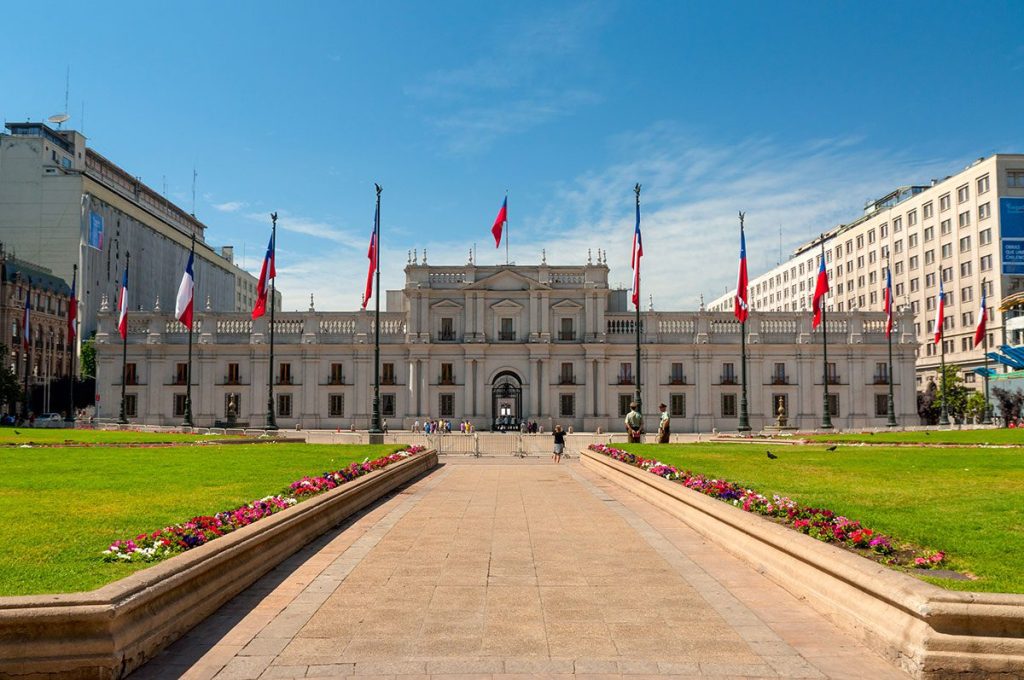
A view of Palacio de la Moneda, the presidential palace in Santiago, Chile. Image source: byvalet/Shutterstock.com
The Chilean presidency is housed at La Moneda, sometimes called “Coin Palace” due to its history as a mint. The neoclassical building, which occupies a whole block in central Santiago, is home to a number of other important government employees. In 1828, its use as a mint came to an end, and by 1845, it had become the Chilean capital. The 1973 coup that brought Pinochet to power bombed it, although it has since been rebuilt. Every other day (or every other day of the month), there is a changing of the guard ceremony.
9. Museum of Memory and Human Rights
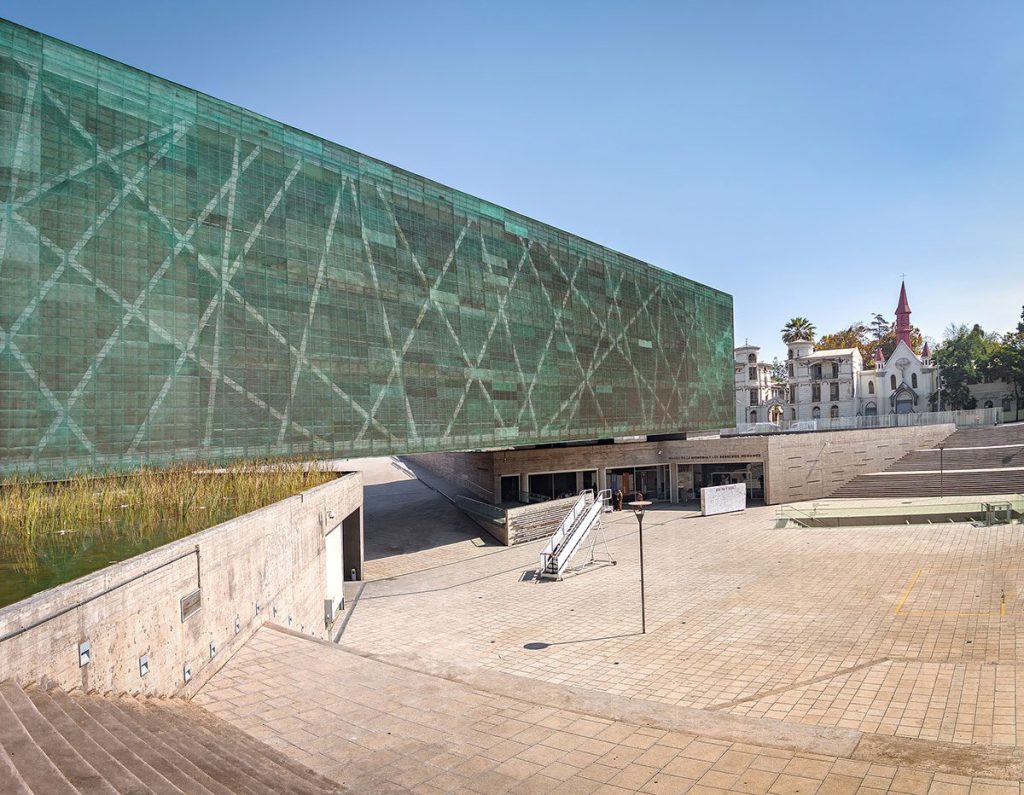
The Memory and Human Rights Museum in Santiago, Chile. Image source: Diego Grandi/Shutterstock.com
The Museum of Memory and Human Rights was established because Chile’s track record on human rights hasn’t always been great. The museum, which was only open for a brief time, serves as a tribute to the Chileans whose rights were abused by the Pinochet government (1973–1990). In 2008, former President of Chile Michelle Bachelet, herself a torture victim under Pinochet, laid the foundation stone for the museum. In addition to torture implements and testimony from survivors, the museum also displays letters written by prisoners to their loved ones while in captivity. Inscribed over the door is Victor Jara’s last poem. The poet was one of Pinochet’s first victims.
8. Gran Torre Santiago
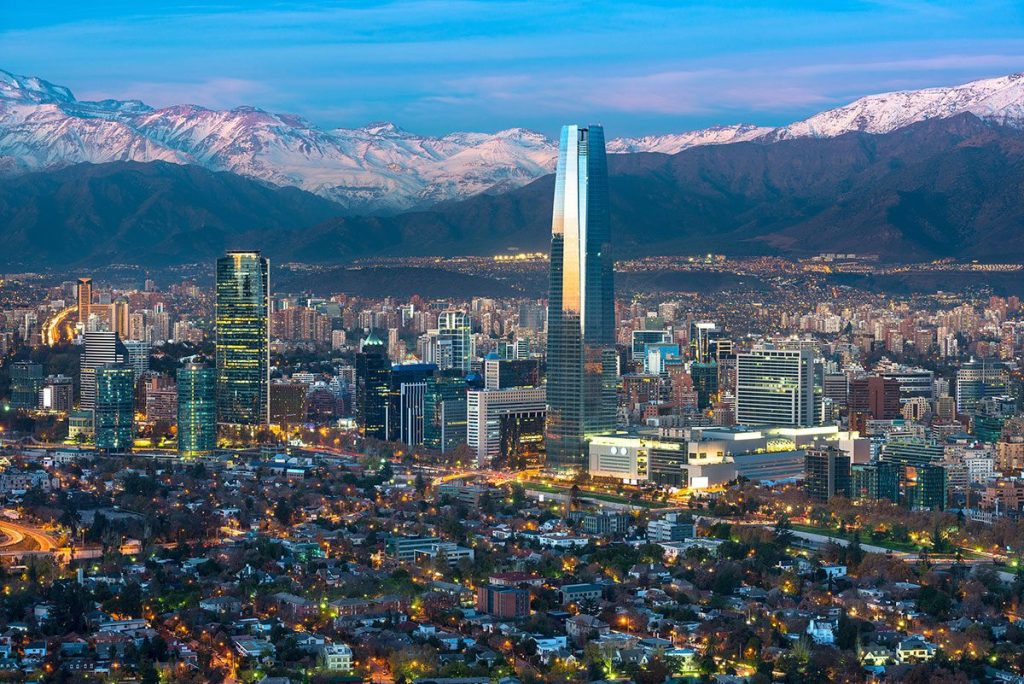
A panoramic view of Providencia and Las Condes districts in Santiago, Chile. Image source: Jose Luis Stephens/Shutterstock.com
Because of its height, the Gran Torre Santiago can be viewed from almost everywhere in Santiago. The building’s 64 floors make it the tallest in South America and among the world’s tallest inhabited buildings. It has six levels below ground and a height of 300 meters (984 ft). Torre 2 of the Costanera Center, also known as Costanera Center, is a portion of the complex that houses the biggest retail mall in South America. A quarter of a million individuals visit the site daily. The higher levels provide an observation deck with panoramic views of the city.
7. Museo Chileno de Arte Precolombino

The Museum of Pre-Columbian Art in Santiago, Chile. Image source: Yasemin Olgunoz Berber/Shutterstock.com
Artifacts reaching back as long as 10,000 years may be found at the Museo Chileno de Arte Precolombino. It includes not only Chilean, but also South American and Central American Pre-Columbian artworks. The original collection was kept hidden, but now there are more than five thousand pieces on display. Several different materials were used in its construction, including metal, fabrics, ceramics, bone, and leather. In the heart of Santiago is a museum dedicated to showcasing the incredible works of art created by indigenous communities before the entrance of Europeans and, in particular, the Spanish.
6. Cerro Santa Lucia

A stunning aerial view of Santiago, Chile from Cerro Santa Lucia. Image source: Droid55/Shutterstock.com
The Cerro Santa Lucia peak in downtown Santiago is all that’s left of a volcano that erupted 15 million years ago. When the Spanish conquered the area in 1543, they christened the hill Santa Lucia Hill in honor of the patron saint of explorers. There have been a few forts there throughout the years, and many people who weren’t Roman Catholic or weren’t regarded as worthy of respect have made their homes there as well. In the 19th century, the hill was redesigned. The castle has been renovated into a park with fountains and statues. Some of the best views of Santiago may be seen here as well.
5. Mercado Central

The Central Market in Santiago, Chile. Image source: Jess Kraft/Shutterstock.com
The fish is the major attraction in the Mercado Central, but they do sell other foods. Fish, oysters, mussels, scallops, clams, and a whole lot more are all available here, as are other seafood items fresh from Chile’s extensive coastline. There are several seafood restaurants at the market if you’d prefer to eat seafood rather than buy it. The Mercado Central has been a fixture in Santiago since it first opened in 1872. It’s located in a massive structure with wrought iron detailing, right down to the top. Near Santiago’s famous Plaza de Armas is where you’ll find Mercado Central.
4. La Chascona
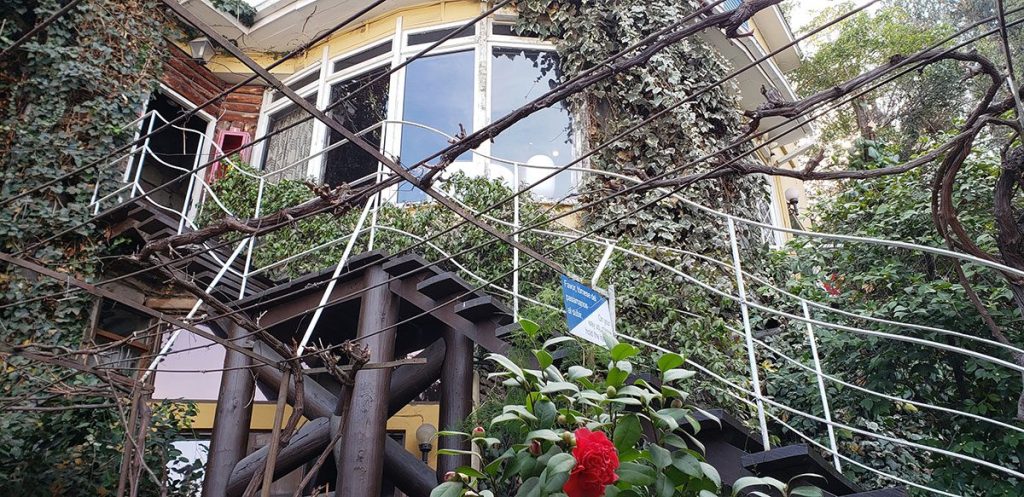
the home of the famous Chilean poet Pablo Neruda. Image source: Lucas Fersa/Shutterstock.com
The home at La Chascona is one of three owned by Pablo Neruda, the Nobel Prize–winning poet from Chile. The other two are located in Valparaiso and Isla Negra. This home reflects Neruda’s eccentric character. La Chascona, the name of his mistress’s unruly red curly hair, is a direct reference to her. Tourists go to the ship-shaped home to gawk at the kitchen, which is styled like a ship’s cabin, and the living room, which is styled after a lighthouse. (The ocean was one of Neruda’s favorite things.) An enchanted garden may be found in the backyard.
3. Barrio Bellavista
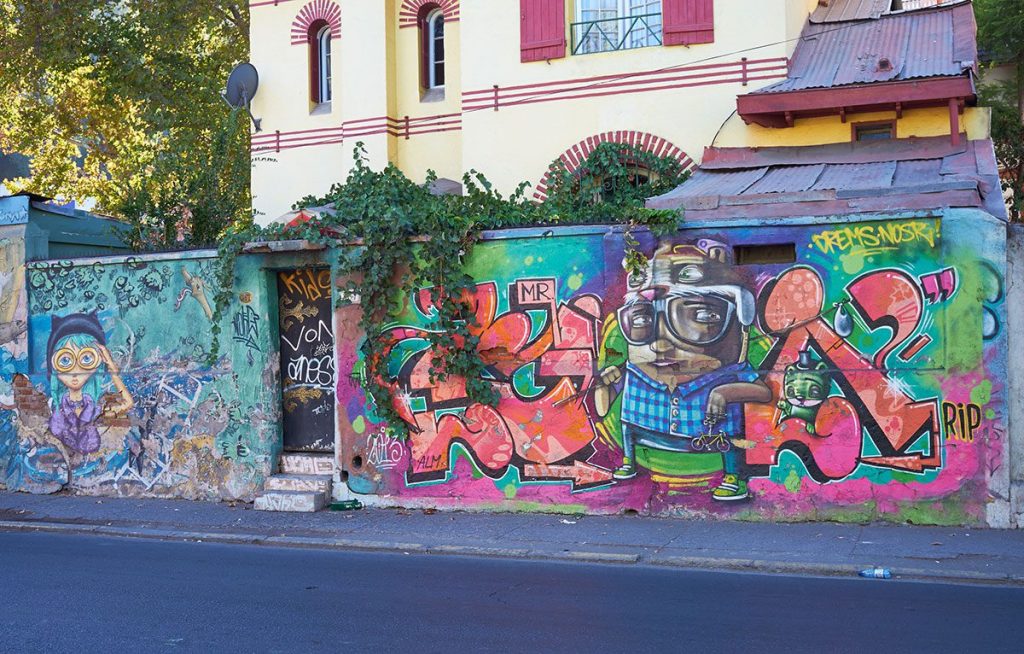
The streets of Santiago’s Bellavista neighborhood are adorned with vibrant, eye-catching murals. Image source: Jeremy Richards/Shutterstock.com
Everything hot and happening in Havana takes place in the Barrio Bellavista. This section of Santiago is the city’s bohemian sector, home to the city’s artists and intellectuals. La Chascona, the home of the poet Pablo Neruda, is one of the city’s most popular tourist destinations. It’s the most happening spot in town, complete with trendy eateries, boutique shops, and cutting-edge art galleries. After the sun goes down, you may party the night away at one of the city’s numerous discos. The barrio’s tree-lined lanes are dotted with brightly painted, century-old homes. Artwork fashioned from the semiprecious lapis lazuli is a hot item at the weekend evening arts and crafts market.
2. Santiago Metropolitan Cathedral
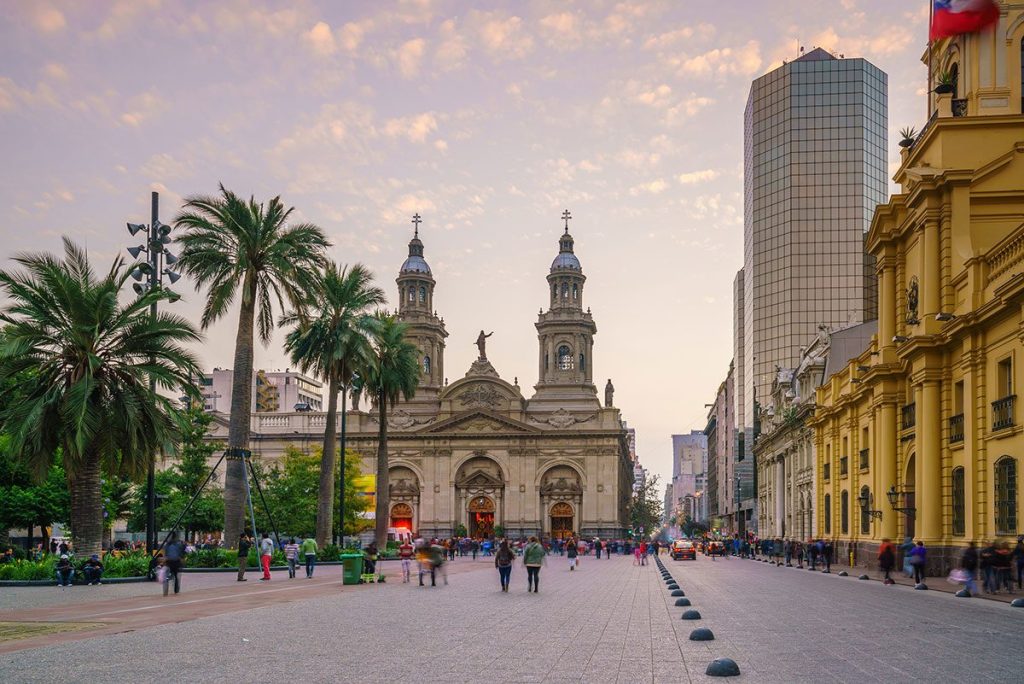
This bustling square in the heart of Santiago is a hub of activity and culture. Image source: f11photo/Shutterstock.com
The Santiago Metropolitan Cathedral has stood atop the Plaza de Armas for almost 260 years, long after earthquakes had destroyed previous churches there. Since construction started in 1748, the cathedral has been the focal point of the town square. The neoclassical cathedral was built entirely of stone, and it is widely regarded as one of the finest specimens of its kind in all of South America. The bones of Chile’s first cardinal are housed in one of the towers. The inside wooden doors of the cathedral were carved in 1765. A beautiful, designed altar and the Museum of Sacred Art may be found within. The vast, ornamented naves only serve to heighten the feeling of awe and wonder.
1. Cerro San Cristobal
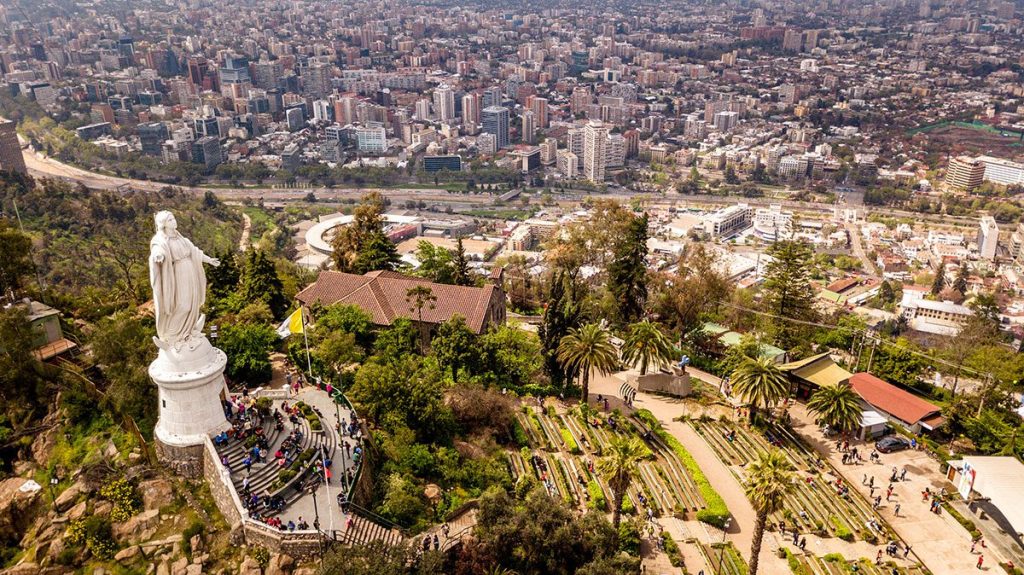
The towering statue of the Virgin Mary on San Cristobal Hill overlooks the city of Santiago. Image source: carriagada/Shutterstock.com
The peak of Cerro San Cristobal, located in northern Santiago, towers above the city and offers spectacular panoramas. The area was given the name “Saint Christopher” by the Spanish conquerors. A shrine honoring the Immaculate Conception may be found at the peak, along with an observatory and a statue of the Virgin Mary. In a little chapel within the sanctuary—which also has an amphitheater where services are held—Pope John Paul II sanctified the Santiago. Aside from the zoo, the national zoo of Chile, a Japanese garden, and two swimming pools can be found atop Cerro San Cristobal, Santiago’s largest park.



